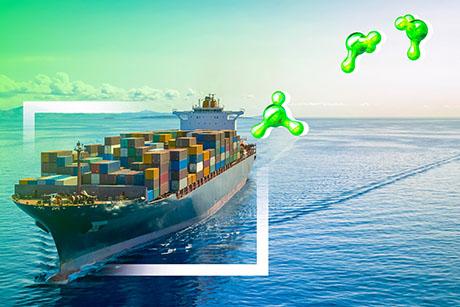STE@M: Sports Technology and Education @ MIT
STE@M: Sports Technology and Education at MIT
 |
| STE@M students gather around Professors Hosoi and Slocum, and Patagonia’s O’Hara, as well as Francisco Goya (holding MIT penant) at Goya Windsurfing. |
| Courtesy of STE@M |
by Alissa Mallinson
If the only thing you saw from the STE@M workshop this past winter were photos of MIT students windsurfing on the sunny shores of Maui, you might have your suspicions as to whether or not it was really an educational trip.
STE@M – Sports Technology and Education @ MIT – was recently started by MechE Professor Anette “Peko” Hosoi for students who are interested in “advancing technology at the interface of sports and engineering.”
Indeed, the group’s success is rooted in the importance of an immersive experience and the pursuit of one’s passions. That is what prompted Hosoi to start STE@M in the first place. She will never forget the first time she went downhill biking – on a cross-country bike.
“After my initial exhilaration, my first thought was, ‘I really need a better bike.’ My second thought was, ‘That would be a great engineering challenge for students who are interested in sports.”’
Mens et Manus
The Maui workshop, inaugurated this past year, has quickly become a hallmark of STE@M. The students – both undergraduates and graduates – receive 6 credits for the course, offered during Intersession Activities Period (IAP). They had multiple assignments to complete pre-Maui, but their first major lesson came almost as soon as they arrived. They spent many hours in Maui waters, windsurfing and kiteboarding, and encountered several functional challenges as a result of diving in and experiencing these activities first hand. Each of the students’ final projects was directly inspired by this hands-on immersion.
“We were trying to tie all the pieces together and make it clear that you need to be connected to a domain and its community on some level to be able to innovate in that area,” says Hosoi.
Do What You Love
The second lesson they learned was something a bit closer to the heart but equally fundamental: Pursue your passions, and the rest will follow. Guest speakers at the workshop – including windsurfing legend Robby Naish, renowned kiteboard designer Ken Winner, VMWare co-founder and sailor Diane Greene, and windsurfing champion Francisco Goya – were all inspiring examples of finding success in the unwavering pursuit of your interests and dreams. For most students, this idea was the most meaningful lesson of the trip.
According to one of the participating students, “I think I can speak for everyone when I say that this workshop was incredibly valuable to my career development and my development as an engineer. The people we met and the topics we discussed inspire me even more to pursue my passions and make a difference.”
Another student said, “I learned a lot about the design process, from keeping a journal, brainstorming, and patenting, to marketing and commercialization. But more importantly, for me, the trip … really exemplified the importance of identifying my interests, following my passions, and turning them into a career. I came back with great confidence that I will succeed just doing the things I love.”
Blowing in the Wind
As part of a focus on wind technology and environmental issues, the workshop also included stops at several local companies and organizations, including Auwahi Wind, the Office of the Mayor of Maui, Naish, and Goya Windsurfing. Students learned about the energy issues Maui is facing and some of the solutions under consideration. They also attended design sessions led by Professor Alexander Slocum and participated in business case discussions led by Tetsuya O’Hara, director of R&D at Patagonia and STE@M advisory board member. O’Hara taught the students how to analyze their ideas using environmental analysis, SWOT (strengths, weaknesses, opportunities, threats) analysis, and five force analysis.
The Goal is to Teach
Back in the states, each team of students presented a sports technology idea that represented all the phases of idea generation and analysis they had learned throughout the week-long workshop. Their ideas clearly emanated from their experience in the field – better ways of relaxing on the ocean, fun games to play in the water, kites that fly in low winds, and more efficient and comfortable gear – and converged with their technical knowledge and experience.
Although pursuit of their idea past their final presentation was optional, several undergraduate students are developing them further for their theses, and a few teams are even moving on to the proof-of-concept and prototyping phases. According to Hosoi, those innovations, if manufactured, will likely be licensed to some of the companies that work with STE@M. As a thank you for their hospitality, host companies also receive introductions to some of MIT’s students and faculty members who might be interested in forming partnerships.
“At MIT, we’re in the business of educating. And for the companies that were so accommodating to us and opened their doors to our students, we would like to give something back,” says Hosoi. “We want companies to know that MIT students are working to advance sports technology and that we’re doing exciting, innovative work. Our ultimate goal is to give the students opportunities that they wouldn’t otherwise have.”

